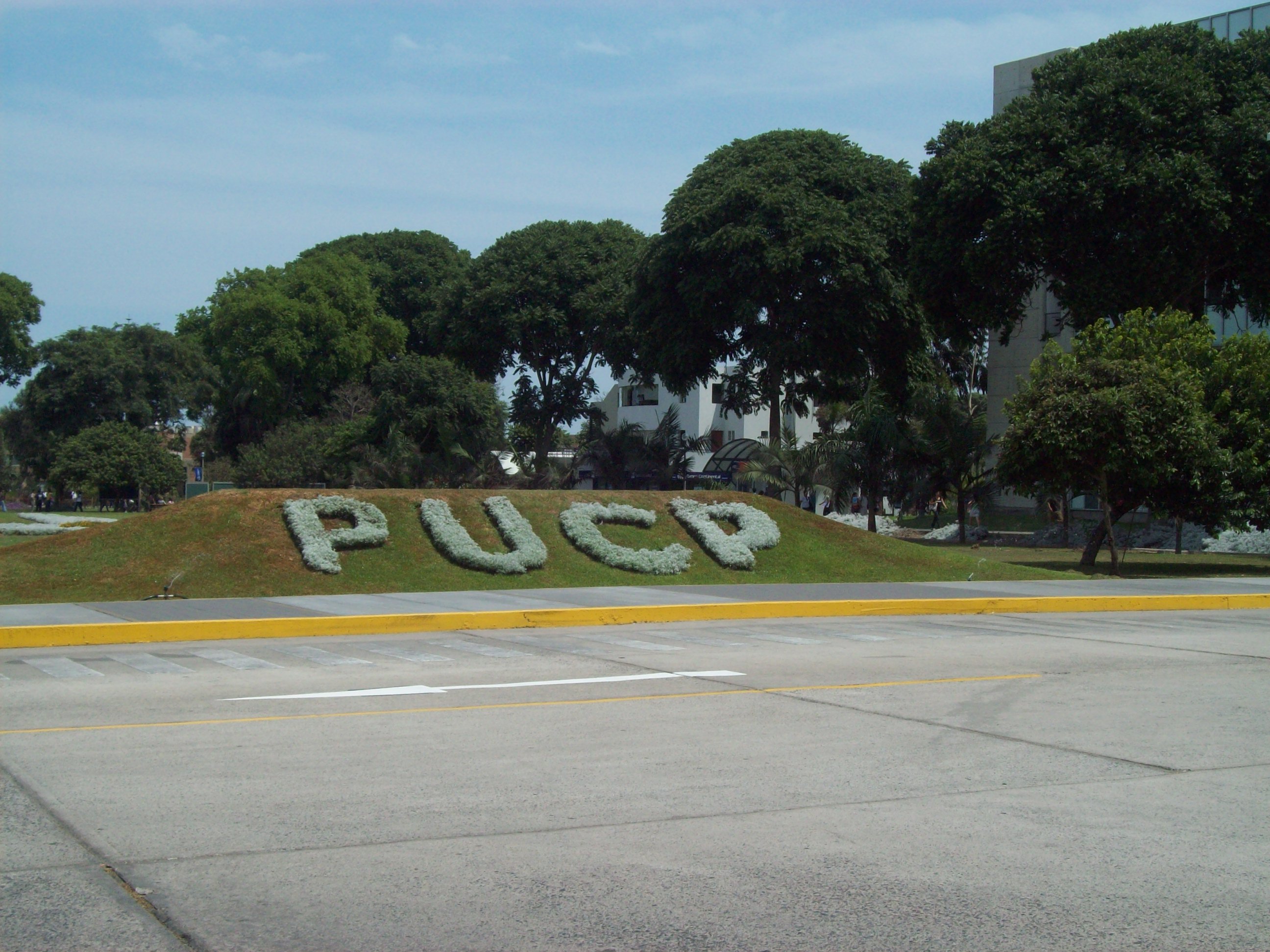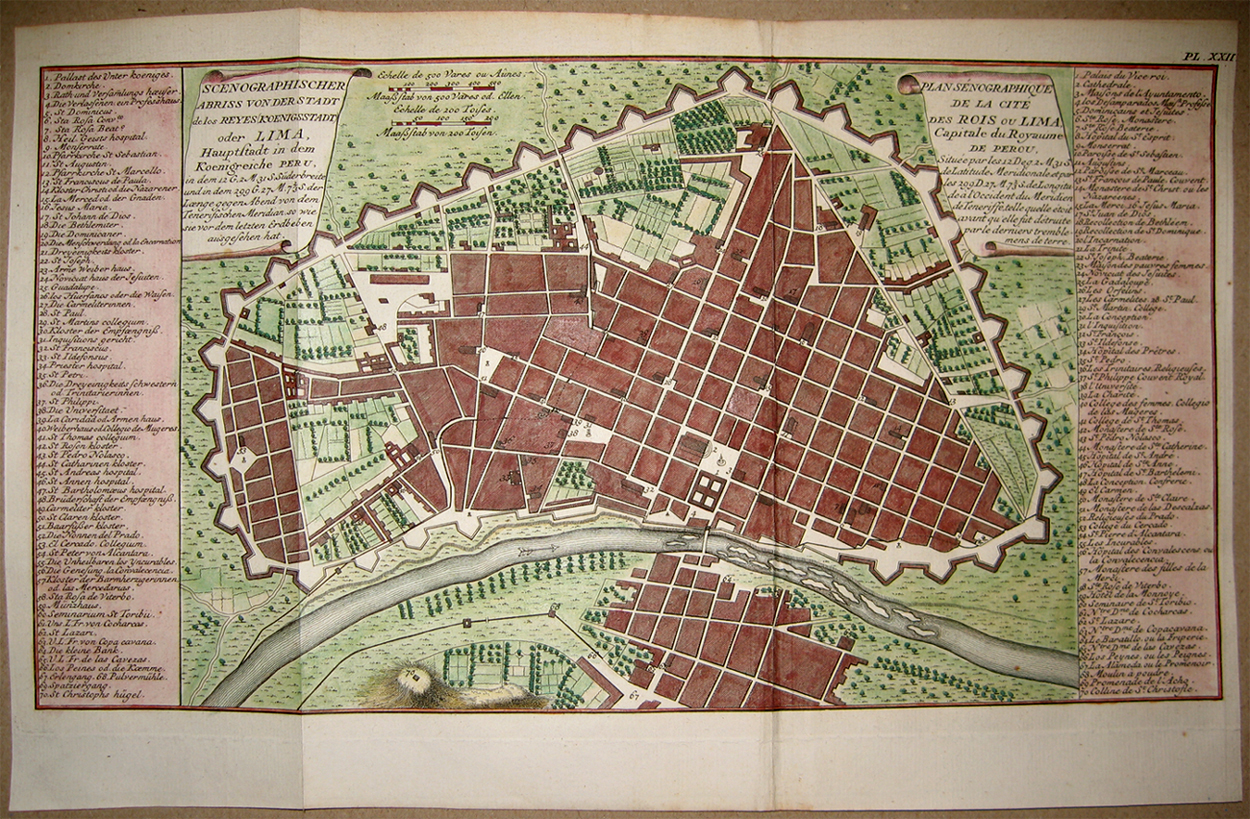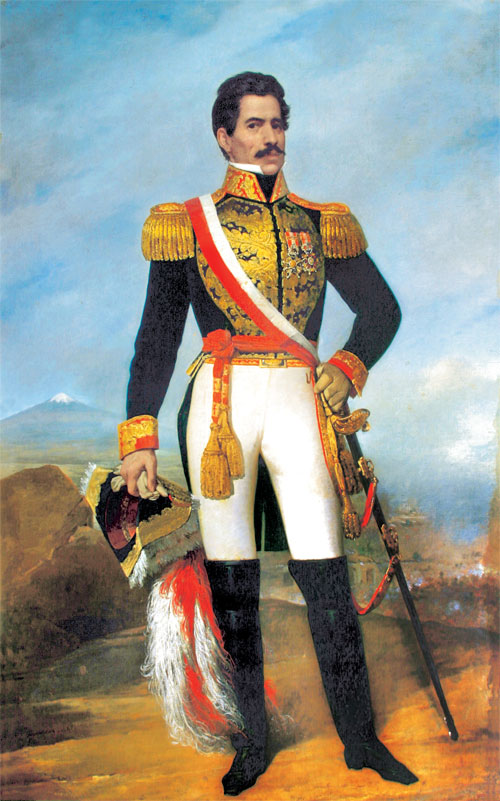|
Jirón Carabaya
Jirón Augusto Wiese, better known as Jirón Carabaya, is a major street in the Damero de Pizarro, located in the historic centre of Lima, Peru. The street starts at its intersection with the Jirón Áncash, and ends at the Paseo de la República. It runs parallel to the Jirón de la Unión, and like said street, it connects the Plaza Mayor with the Plaza San Martín, ending at the Paseo de los Héroes Navales. History In 1862, when a new urban nomenclature was adopted, the road was named jirón Carabaya, after Carabaya Province (it was later renamed during the 20th century, being named after philanthropist ). Prior to this renaming, each block (''cuadra'') had a unique name: *Block 1: Pescadería, after a fish market that was later demolished. *Block 2: Gradas de la Catedral/Cruz de Gradas/Covachuelas, after the steps that lead to the Cathedral. Also at one point called ''Peligro'' by a foreigner. *Block 3: Bodegones/de la Requena, the former name coming from the warehouse ... [...More Info...] [...Related Items...] OR: [Wikipedia] [Google] [Baidu] |
Archbishop's Palace Of Lima
The Archbishop's Palace of Lima, the capital of Peru, is the residence of the Archbishop of Lima, and the administrative headquarters of the Archdiocese of Lima. It is located at the Plaza Mayor, in the Historic Centre of Lima. History Located on land that Francisco Pizarro allocated to be the residence of the head priest of Lima after the foundation of the city in 1535, the current building was opened on December 8, 1924, and is considered a prime example of Spanish Colonial Revival architecture that developed in Lima and in many places in Latin America during the early twentieth century. Arqandina, El Portal Peruano de Arquitectura''El Palacio Arzobispal''/ref> The old Archbishop's Palace was built on the place the Cabildo of Lima had occupied from 1535 to 1548, when that institution moved to its current location across the square. The building had six balconies of different styles and several entrances, displaying the Archdiocese coat of arms above the main gate. The arch ... [...More Info...] [...Related Items...] OR: [Wikipedia] [Google] [Baidu] |
Blog PUCP
Pontifical Catholic University of Peru (, PUCP) is a private university in Lima, Peru. It was founded in 1917 with the support and approval of the Catholic church, being the oldest private institution of higher learning in the country. The Peruvian historian and politician José de la Riva-Agüero y Osma would become his main benefactor by leaving him most of his assets as an inheritance, as it was then a more religious educational institution and linked to the Catholic Church; in contrast to his alma mater and original destination of his inheritance, the National University of San Marcos, where Riva-Agüero considered that liberal ideas and atheism predominated here. In July 2012, after an apostolic visitation, begun earlier, in 2011, by Peter Erdo, Archbishop of Esztergom-Budapest, Hungary, the Holy See withdrew from the university the right under canon law to use the titles ''Catholic'' and ''Pontifical'' in its name. Archbishop of Lima, Juan Luis Cipriani, was the main ad ... [...More Info...] [...Related Items...] OR: [Wikipedia] [Google] [Baidu] |
Streets In Lima
Streets is the plural of street, a type of road. Streets or The Streets may also refer to: Music * Streets (band), a rock band fronted by Kansas vocalist Steve Walsh * ''Streets'' (punk album), a 1977 compilation album of various early UK punk bands * '' Streets...'', a 1975 album by Ralph McTell * '' Streets: A Rock Opera'', a 1991 album by Savatage * "Streets" (Doja Cat song), from the album ''Hot Pink'' (2019) * "Streets", a song by Avenged Sevenfold from the album ''Sounding the Seventh Trumpet'' (2001) * The Streets, alias of Mike Skinner, a British rapper * "The Streets" (song) by WC featuring Snoop Dogg and Nate Dogg, from the album ''Ghetto Heisman'' (2002) Other uses * ''Streets'' (film), a 1990 American horror film * Streets (ice cream), an Australian ice cream brand owned by Unilever * Streets (solitaire), a variant of the solitaire game Napoleon at St Helena * Tai Streets (born 1977), American football player * Will Streets (1886–1916), English soldier and poet ... [...More Info...] [...Related Items...] OR: [Wikipedia] [Google] [Baidu] |
Universidad Nacional Mayor De San Marcos
The National University of San Marcos (, UNMSM) is a public research university located in Lima, the capital of Peru. In the Americas, it is the first officially established ( privilege by Charles V, Holy Roman Emperor) and the oldest continuously operating university. The university started in the general studies that were offered in the convent of the Rosario of the order of Santo Domingo—the current Basilica and Convent of Santo Domingo—in around 1548. Its official foundation was conceived by Fray Thomas de San Martín on May 12, 1551; with the decree of Emperor Charles I of Spain and V of the Holy Roman Empire. In 1571, it acquired the degree of pontifical granted by Pope Pius V, with which it ended up being named the "Royal and Pontifical University of the City of the Kings of Lima". It is also referred to as the "University of Lima" throughout the Viceroyalty. Throughout its history, the university had a total of four colleges under tutelage: the Colegio Real y M ... [...More Info...] [...Related Items...] OR: [Wikipedia] [Google] [Baidu] |
Metropolitan Municipality Of Lima
The Metropolitan Municipality of Lima () is the local government entity of the Lima Province and Lima District Lima (), also known as the ''Cercado de Lima'', is a Districts of Peru, district of the Lima Province, eponymous province of Lima, Peru. It is the oldest district of the province and as such, vestiges of the city's Viceroyalty of Peru, Spanish .... It is the only provincial municipality of special regime with faculties of regional government. It is established according to the 2002 ''Organic Law of Regional Governments'' (') and the 2003 ''Organic Law of Municipalities'' ('). Organization The organs of the Metropolitan Municipality of Lima are: * the Council ('); * the Mayor of Lima ('); and * the Metropolitan Assembly ('). The Council consists of the Mayor and five aldermen, according to the ''Municipal Elections Law'' ('). The Metropolitan Assembly is an advisory and coordinating body.Article 162 of the Organic Law of Municipalities Function and powers Ac ... [...More Info...] [...Related Items...] OR: [Wikipedia] [Google] [Baidu] |
Historic Centre Of Lima
The Historic Centre of Lima () is the historic city centre of the city of Lima, the capital of Peru. Located in the city's districts of Lima and Rímac, both in the Rímac Valley, it consists of two areas: the first is the Monumental Zone established by the Peruvian government in 1972, and the second one—contained within the first one—is the World Heritage Site established by UNESCO in 1988, whose buildings are marked with the organisation's black-and-white shield. Founded on January 18, 1535, by Conquistador Francisco Pizarro, the city served as the political, administrative, religious and economic capital of the Viceroyalty of Peru, as well as the most important city of Spanish South America. The evangelisation process at the end of the 16th century allowed the arrival of several religious orders and the construction of churches and convents. The University of San Marcos, the so-called "Dean University of the Americas", was founded on May 12, 1551, and began its func ... [...More Info...] [...Related Items...] OR: [Wikipedia] [Google] [Baidu] |
Spanish Colonial Revival
The Spanish Colonial Revival architecture (), often known simply as Spanish Revival, is a term used to encompass a number of revivalist architectural styles based in both Spanish colonial architecture and Spanish architecture in general. These styles flourished throughout the Americas, especially in former Spanish colonies, from California to Argentina. In the United States, the earliest use of this style was in Florida, Texas, and California. St. Augustine, Florida was founded on September 8, 1565, by Spanish admiral Pedro Menéndez de Avilés, Florida's first governor. The city had served as the capital of Florida for over 250 years when Spain ceded Florida to the United States in 1819. By the late 1880s, St. Augustine was being developed by Henry M. Flagler as a winter resort for wealthy northern families. He built two grand hotels in the Mediterranean Revival and Spanish Revival styles: the Ponce de Leon Hotel (Carrère and Hastings, 1882) and the Alcazar Hotel (Carrè ... [...More Info...] [...Related Items...] OR: [Wikipedia] [Google] [Baidu] |
Beaux-Arts Architecture
Beaux-Arts architecture ( , ) was the academic architectural style taught at the in Paris, particularly from the 1830s to the end of the 19th century. It drew upon the principles of French neoclassicism, but also incorporated Renaissance and Baroque elements, and used modern materials, such as iron and glass, and later, steel. It was an important style and enormous influence in Europe and the Americas through the end of the 19th century, and into the 20th, particularly for institutional and public buildings. History The Beaux-Arts style evolved from the French classicism of the Style Louis XIV, and then French neoclassicism beginning with Style Louis XV and Style Louis XVI. French architectural styles before the French Revolution were governed by Académie royale d'architecture (1671–1793), then, following the French Revolution, by the Architecture section of the . The academy held the competition for the Grand Prix de Rome in architecture, which offered prize winn ... [...More Info...] [...Related Items...] OR: [Wikipedia] [Google] [Baidu] |
Cultural Heritage Of Peru
The cultural heritage of Peru, officially the Cultural heritage of the Nation, is the name given to the set of goods, both tangible and intangible, accumulated over time. These goods can be paleontological, archaeological, architectural, historical, artistic, military, social, anthropological or intellectual. In Peru, the competence for the protection of cultural heritage is in the hands of the Ministry of Culture (Peru), Ministry of Culture. In August 2000, the National Institute of Culture published a list of temples, convents and cemeteries declared cultural heritage. Classification In Peru, cultural heritage is regulated by Law No. 28296 (''General Law of Cultural Heritage of the Nation''), which establishes the national policy for the defense, protection, promotion, ownership and legal regime and the destination of the goods that constitute the Cultural Heritage of the Nation. Categories *Immovable material heritage: Those cultural assets that cannot be moved, including arc ... [...More Info...] [...Related Items...] OR: [Wikipedia] [Google] [Baidu] |
Augusto B
Augusto is an Italian, Portuguese, and Spanish given name or surname. Derived from Augustus, meaning in Latin "majestic," "the increaser," or "venerable", it is notable as being the name of the first emperor of Ancient Rome. The Greek translation of the title Augustus was Sebastos, from which the name Sebastian descends. Given name * Augusto Aníbal (1887–1965), Brazilian film actor and singer * Augusto dos Anjos (1884–1914), Brazilian poet and professor * Augusto Arbizo (born 1972), Philippine visual artist * Augusto Antonio Barbera (born 1938), Italian law professor, politician and judge * Augusto Benedico (1909–1992), Mexican actor * Augusto Boal (1931–2009), Brazilian stage director, drama theorist and political activist * Augusto de Campos (born 1931), Brazilian poet * Augusto Fantozzi (1940–2019), Italian lawyer, tax expert, academic, businessman, politician and government minister * Augusto Farfus (born 1983), Brazilian race car driver * Augusto Fernánd ... [...More Info...] [...Related Items...] OR: [Wikipedia] [Google] [Baidu] |
Ramón Castilla
Ramón Castilla y Marquesado (; 31 August 1797 – 30 May 1867) was a Peruvian ''caudillo'' who served as President of Peru three times as well as the Interim President of Peru (Revolution Self-proclaimed President) in 1863. His earliest prominent appearance in Peruvian history began with his participation in a commanding role of the army of the Libertadores that helped Peru become an independent nation. Later, he led the country when the economy boomed due to the exploitation of guano deposits. Castilla's governments are remembered for having abolished slavery and modernized the state. He assumed the presidency for the first time after general Domingo Nieto's death for a short period in 1844, then in 1845 until 1851, again from 1855 to 1862 and, finally, during a brief period in 1863. First years Castilla was born in Tarapacá (then part of the Viceroyalty of Peru), the second son of Pedro Castilla, of Spanish-Argentine origin, and Juana Marquezado de Romero, who was ... [...More Info...] [...Related Items...] OR: [Wikipedia] [Google] [Baidu] |
Manuel Candamo
Manuel González de Candamo e Iriarte (July 14, 1841 – May 7, 1904) served as the 33rd President of Peru from 1903 until his death in 1904. He also served as Interim President of Peru, officially as the President of the Government Junta, from September 8, 1903, until his death the following year. Early life and family Born in a wealthy family, Manuel was the son of Pedro González de Candamo e Astorga (Puerto de Valparaiso, Chile, June 30, 1799 – Lima, January 22, 1866), Peruvian Ambassador – then the richest man in Peru – and wife María de las Mercedes Iriarte e Odria; paternal grandson of Alfonso González de Candamo y Prieto (born in Asturias the son of Gaspar González de Candamo and wife Eulalia Prieto) and wife Petronila de Astorga y Urizar (born in Valparaiso, Chile) and maternal grandson of Pedro Ignacio Iriarte y Velasco-Patiño, mine owner from Huancayo, who bought the Hacienda Lobatón in 1819 and half of the Hacienda Cónsac, and wife Paula Odria y G ... [...More Info...] [...Related Items...] OR: [Wikipedia] [Google] [Baidu] |





